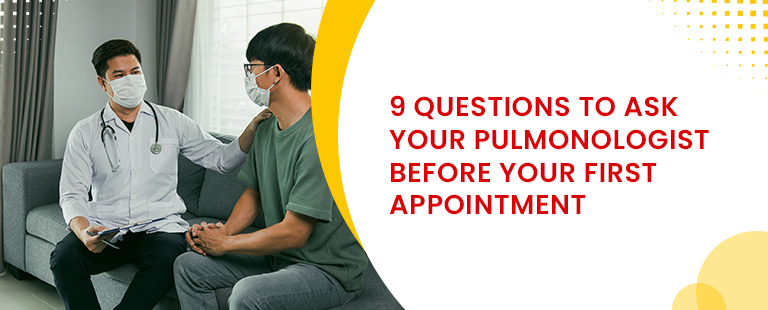You might still be determining what to expect if this is your first time seeing a pulmonologist. A pulmonary doctor’s consultation is extremely necessary for emergencies related to the lungs. If a person has been severely ill for a long time or doesn’t have his lungs functioning correctly, a pulmonary doctor’s consultation becomes a must. Even though seeing a doctor for the first time could be unsettling, you should ask some key questions to understand your issue and the available solutions fully. Ask your queries to the lung specialists and get your head clear about them. The lung specialist queries can brief you about different procedures and processes regarding the lungs and their well-being.
Think about asking your pulmonologist the following nine questions before your first appointment:
How many patients with my problem have you seen?
Knowing if your pulmonologist has experience treating patients with your ailment is essential. Your confidence in their ability to diagnose and treat your sickness will grow. Once you are confident about it, you can rest assured. Also, if any doubts come to your mind, you can clear them. Be it a chest X-ray interpretation doubt or some other.
What are the typical signs and symptoms of my illness?
Knowing the typical symptoms of your ailment will make it easier for you to recognise when your symptoms are worsening or whether you need to see a doctor. Accordingly, you can go for a pulmonary doctor’s consultation and get the problem diagnosed in its early stage. It is always better to nip it in the bud to avoid getting it bigger in the future. Clear your remaining queries with your lung specialist. You can also ask about and clear the chest X-ray interpretation doubts.
What tests will you run to determine the severity of my condition?
To diagnose your problem, your pulmonologist might need to run several tests. Fear of the procedure might be reduced by knowing what to anticipate. Share your breathing difficulty concerns with the pulmonologist. If you have any other problem related to the working of your lungs, you can mention it to them. However, always check for breathing difficulty concerns first and speak about them to the pulmonologist.
What choices are there for the treatment of my condition?
Your pulmonologist can assist you in understanding which treatment options might be most beneficial for you. There may be several treatment options available for your condition. Clear your chest X-ray interpretation doubts first, and then move on to deciding what you have to do.
What potential adverse effects are there for the drugs you are recommending?
You can better prepare for bad responses by knowing the medication’s possible side effects. Go for the pulmonary doctor’s consultation if there are any.
How often will I need to come back for follow-up appointments?
You can stay on top of your treatment plan and monitor any changes in your condition by knowing how frequently you should attend follow-up sessions.
Should I alter my way of life to manage my condition better?
You can alter your way of life and receive medical care to help manage your disease. What adjustments might be beneficial can be suggested by your pulmonologist.
Do people with my disease have access to any support networks or resources?
Being aware of support groups and services can facilitate the ability to interact with people going through similar situations and learn more about your disease.
How can I stop my health from deteriorating?
You can control your disease and prevent it from worsening by taking precautions. How you can stop your symptoms from getting worse is something your pulmonologist can advise you on. Make sure you keep a note of all the advice given to you by your pulmonologist. It doesn’t end here; you must follow them for a healthy lifestyle.
Conclusion
Before your initial meeting, discuss these nine issues with your pulmonologist to have a better understanding of your illness, your available alternatives for therapy, and how to handle your symptoms. To maximise the value of your appointment, it is crucial to be organised and knowledgeable about the overall treatment. At Germanten Hospital find experienced doctors who can help you with the best treatment options.





